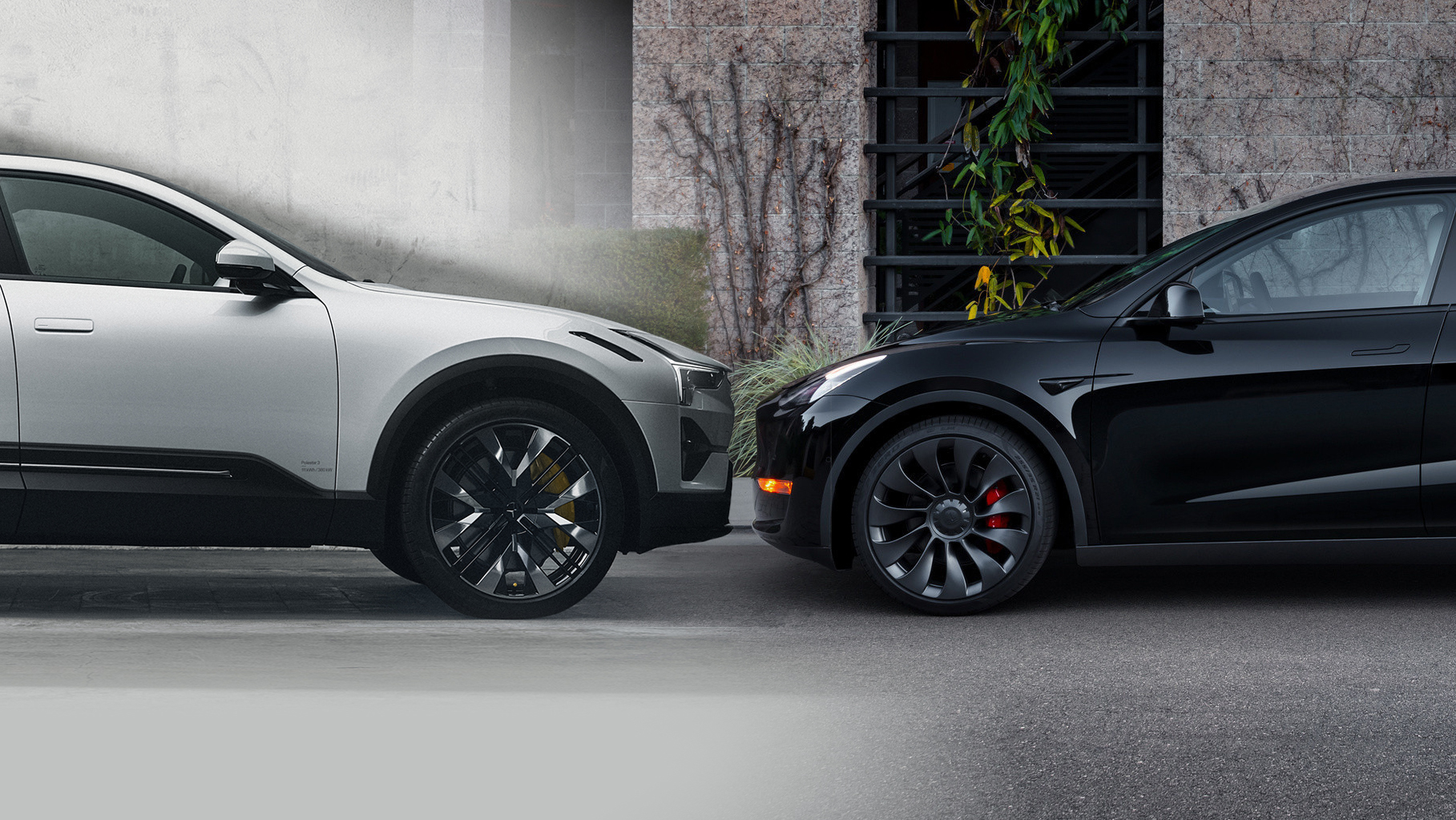
Here we have two electric cars, one a medium SUV that starts below $70,000 – the other a bigger and more expensive option, due here in 2024. Seems like an odd comparison? Read on…
For these two EV-dedicated brands, the Polestar 3 and Tesla Model Y are the only SUVs available for Australian buyers to consider, so how do they compare on paper?
Firstly, why these two? Mostly timing. The smaller Polestar 4 will be a more direct rival to the Model Y, but it isn’t expected to debut until 2024. Likewise, the Tesla Model X SUV – the new Polestar 3’s proper rival – remains on a sales hiatus in Australia until its major facelift arrives.
If you want to see how the Polestar 3 compares with its actual segment rivals in Australia, see our pricing story here. But, even against the smaller Model Y, there are some good questions here for buyers considering a move into the EV world.
What are they?
The Polestar 3 marks the Chinese-Swedish brand’s first electric SUV, using a dedicated BEV platform it debuts more advanced technology and is due for Australian release in early 2024 from $132,900 before on-road costs.
The ubiquitous Tesla Model Y is the American company’s mainstream electric SUV with minimalistic design, and a price tag under six figures that is available for delivery within months. Both are made in China.
So, is it worth the wait and nearly double the price for a Polestar 3, or do the numbers favour the Tesla Model Y?
JUMP AHEAD
Pricing
The Polestar 3 is the markedly more expensive offering here, as a large five-seat luxury SUV offered exclusively in a Long Range Dual Motor configuration.
Only the entry-level Tesla Model Y rear-wheel drive (RWD) is eligible for the fringe benefits tax (FBT) exemption for company fleets and those on novated leases, but neither of these EVs qualify for the one-off purchase rebates offered in some regions.
| Polestar 3 | Tesla Model Y |
|---|---|
| $132,900 to $141,900 | $69,300 to $94,900 |
| NOTE: All prices are before on-road costs and options. | |

Performance
On paper, the Polestar 3’s performance figures sit in between the single-motor Model Y RWD and dual-motor Performance.
Tesla doesn’t offer the Model Y Long Range in Australia yet, which would be more comparable to the Polestar 3 Long Range Dual Motor.
But, even when the Polestar 3 is fitted with the Performance Pack, it still can’t match the lighter and smaller Model Y Performance.
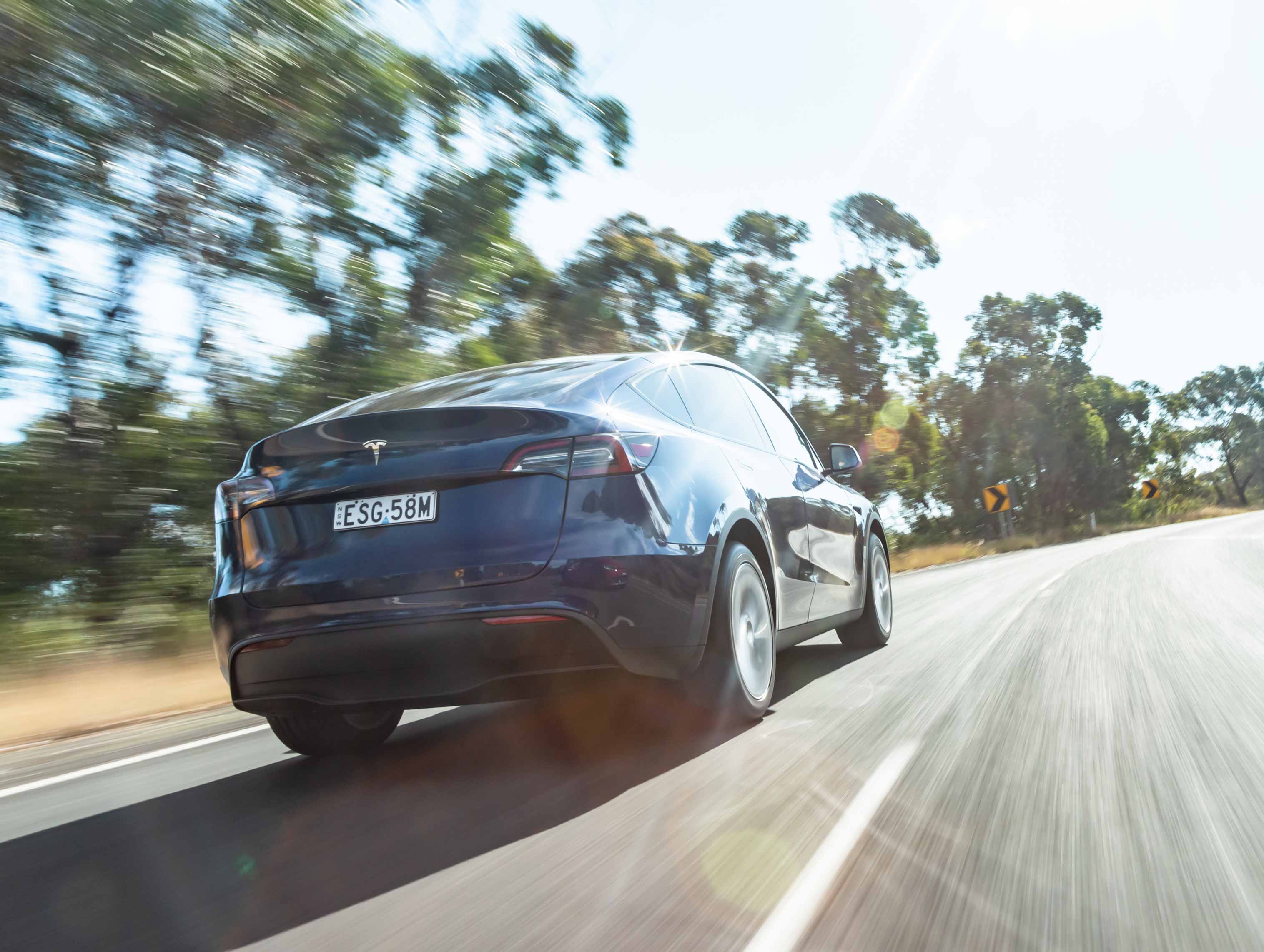
| Polestar 3 (Long Range Dual Motor / with Performance Pack) | Tesla Model Y (RWD / Performance) | |
|---|---|---|
| Power | 360 / 380kW | 220 / 393kW* |
| Torque | 840 / 910Nm | 420 / 660Nm* |
| 0-100km/h | 5.0 / 4.7 seconds | 6.9 / 3.7 seconds |
| Drive type | AWD | RWD / AWD |
| *Unlike other carmakers, Tesla doesnu2019t disclose all specs in its marketing. These numbers are according to EV Database and verified by official approval filings to the Australian Government. | ||
Driving range
Thanks to a significantly larger battery pack on the Polestar 3 EV, it boasts a slightly longer driving range – but the advantage isn’t as wide as it could be, due to higher energy consumption.
The Polestar 3 uses the common nickel-manganese-cobalt (NMC) battery chemistry and emphasises its material supply chain is environmentally and socially responsible. The automaker recommends charging the pack to a maximum of 90 per cent to maintain good battery health.
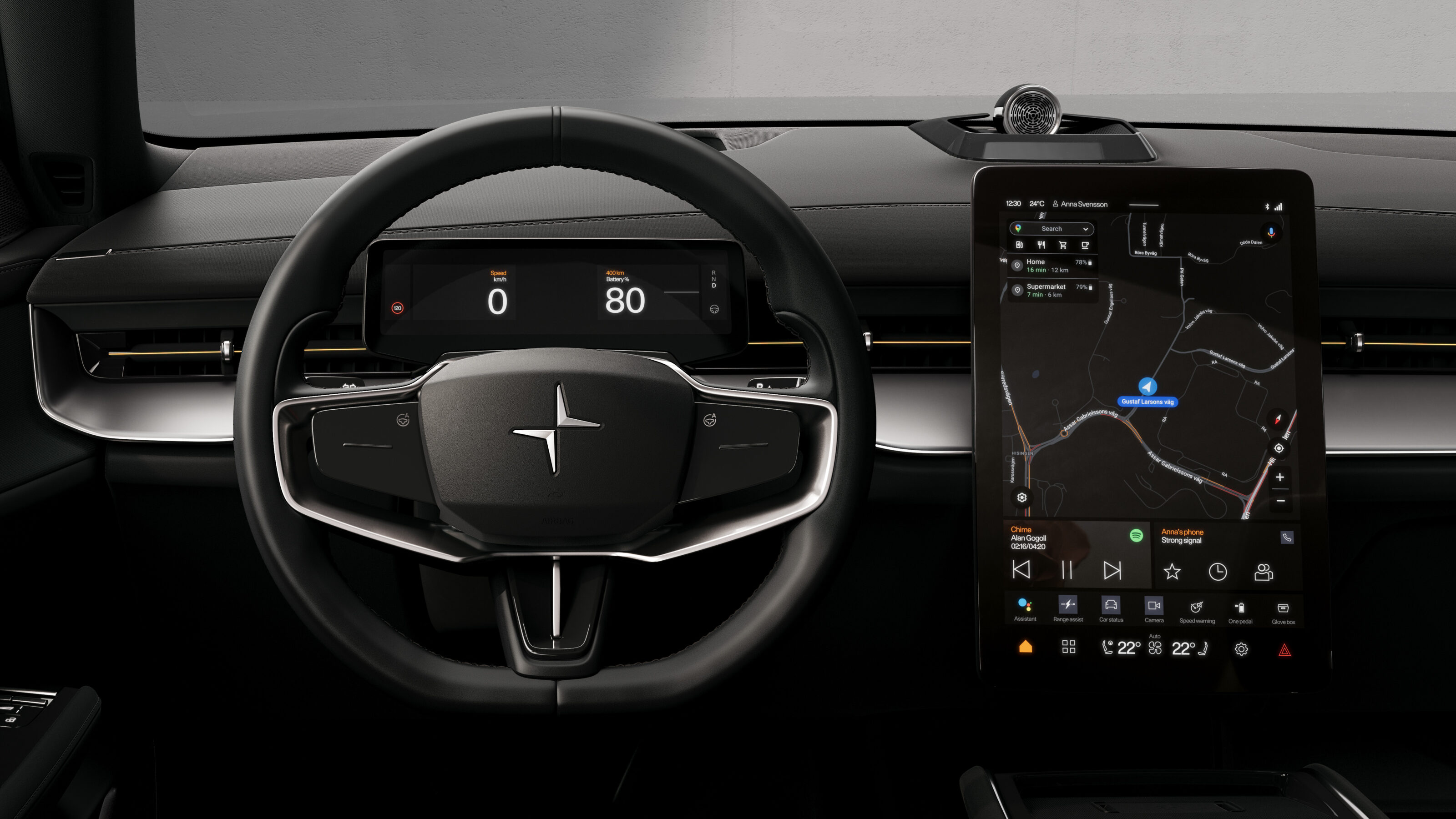
Meanwhile, the base Tesla Model Y RWD adopts a cobalt-free, longer-lasting lithium-iron-phosphate (LFP) battery, and the Performance is home to a nickel-cobalt-aluminium (NCA) type. The company recommends charging up to 100 per cent, or 90 per cent respectively.
Polestar and parent/stablemate Volvo are both expected to switch to LFP in the near future, although neither brand has offered a timeline.
| Polestar 3 (Long Range Dual Motor / with Performance Pack) | Tesla Model Y (RWD / Performance) | |
|---|---|---|
| Claimed range (WLTP) | 610 / 560km | 455 / 514km |
| Claimed efficiency (WLTP) | 20.1-21.1kWh/100km / 21.9-23.1kWh/100km | 15.7kWh/100km / 17.1kWh/100km* |
| Battery size (usable) | 107kWh | 57.5kWh / 75kWh* |
| *Unlike other carmakers, Tesla doesnu2019t disclose battery sizes or power figures, so these numbers are according to EV Database. | ||
Charging
Both flagship electric SUVs boast identical AC and DC charging capabilities.
With its smaller LFP battery, the base Model Y RWD’s DC speed is capped at 170kW.
It’s worth noting that, while the Polestar 3 theoretically takes longer to recharge – due to a larger battery size – its battery management system (BMS) algorithms will differ in controlling how much electricity the vehicle takes during each charging session.

| Polestar 3 | Tesla Model Y (RWD / Performance) | |
|---|---|---|
| Max AC charge rate | 11kW | 11kW* |
| Max DC charge rate | 250kW | 170kW / 250kW* |
| Charging connector | Type 2 CCS2 | Type 2 CCS2 |
| Bidirectional charging | Yes u2013 V2G capable | No |
| *Unlike other carmakers, Tesla doesnu2019t disclose all specs in its marketing. These numbers are according to EV Database. | ||
Dimensions
The Polestar 3 is bigger in every direction, although the Model Y EV is similar in height and width.
Despite this, the Polestar large electric SUV benefits from a smaller turning circle for better manoeuvrability.
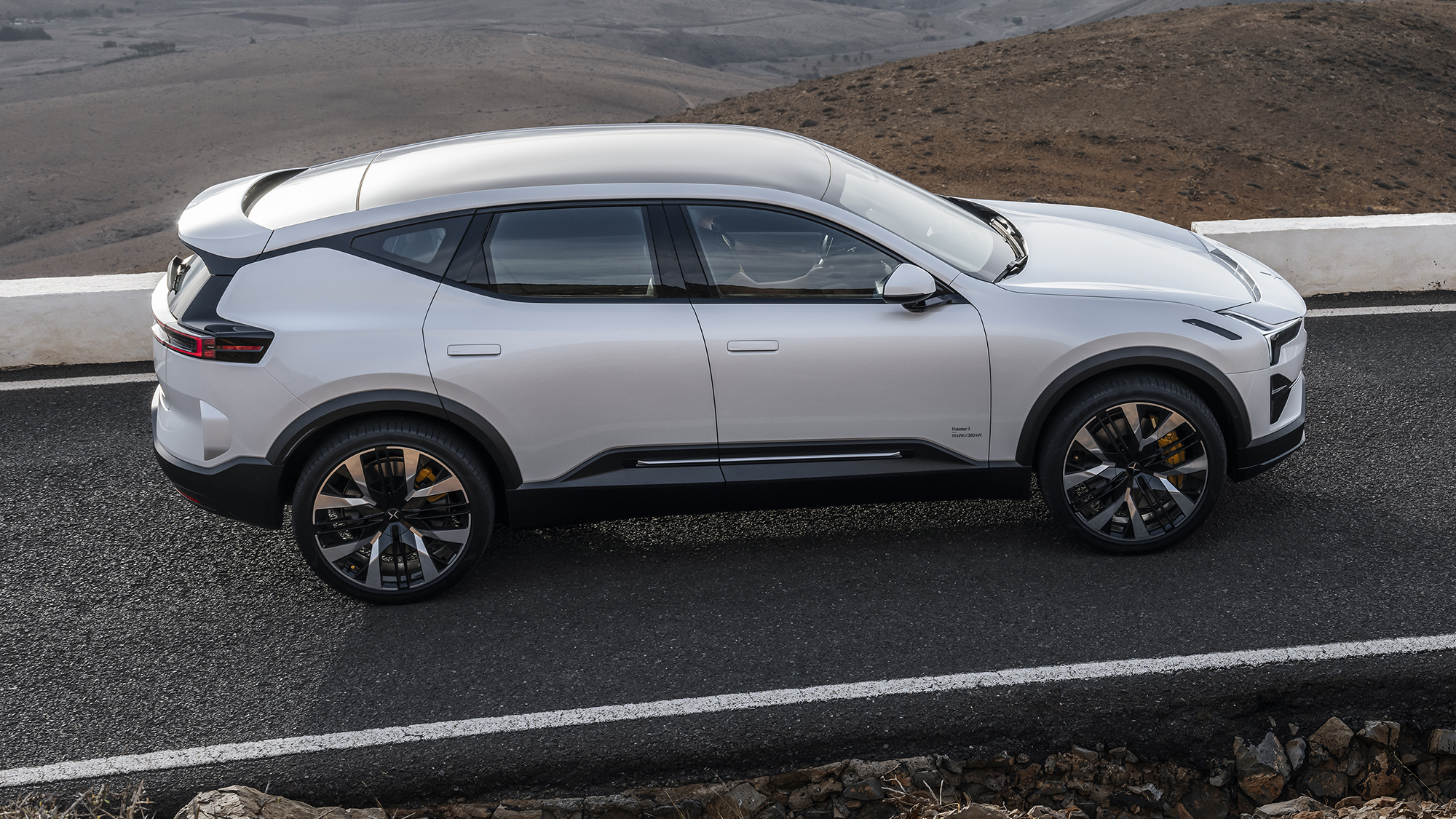
| Polestar 3 | Tesla Model Y | |
|---|---|---|
| Length | 4900mm | 4751mm |
| Width | 1968mm | 1921mm |
| Height | 1614mm | 1624mm |
| Wheelbase | 2985mm | 2890mm |
| Ground Clearance | 201mm | 172mm (157mm on Performance) |
| Turning circle | 11.8m | 12.1m |
Cargo space
While both models ride on a dedicated EV platform, the smaller Model Y has the advantage when it comes to ‘frunk’ and boot capacity (when the rear row seats are folded down).
An electric tailgate is standard on both, but only the Polestar 3 is hands-free, due to the inclusion of a ‘kick’ motion sensor under the rear bumper.
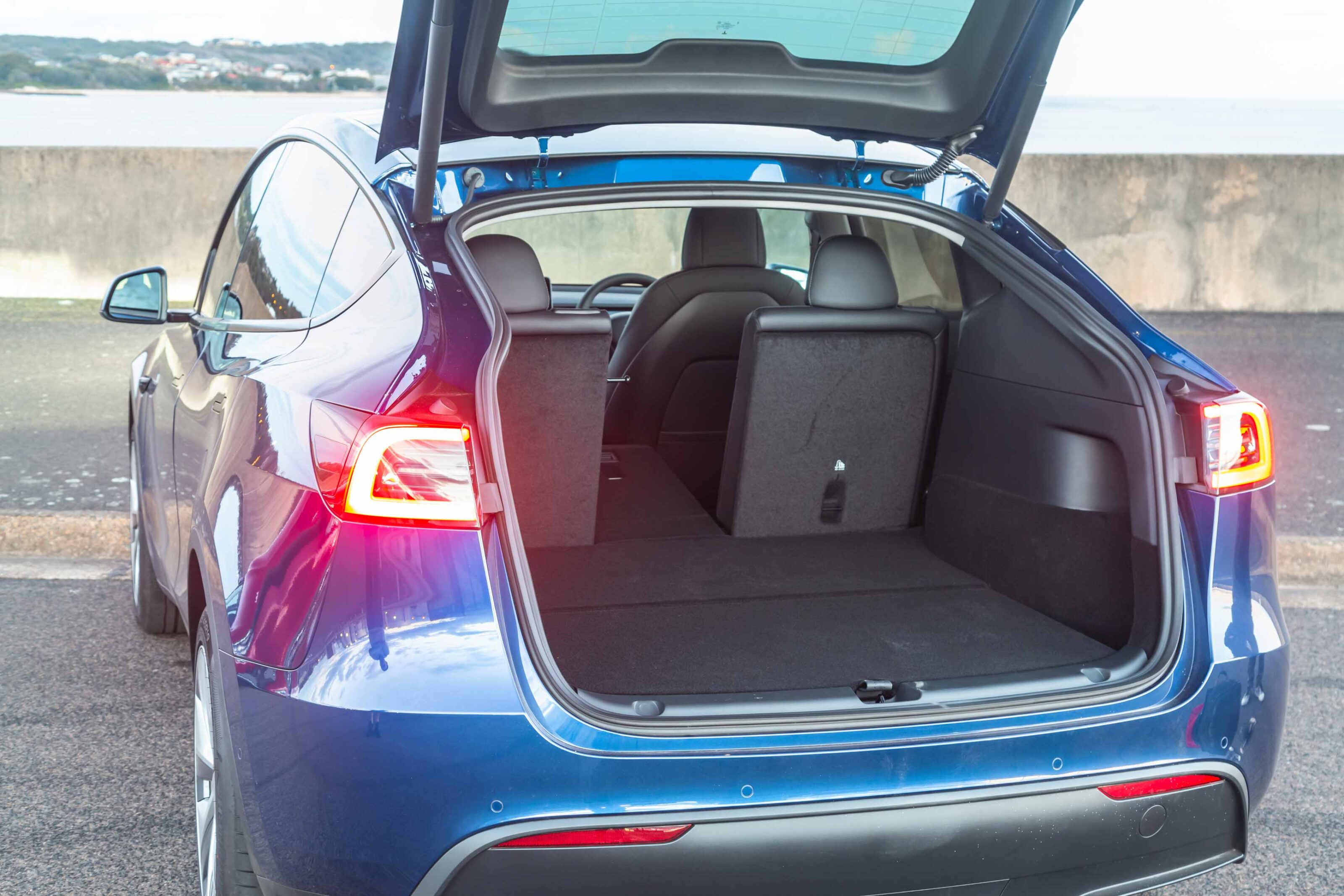
| Polestar 3 | Tesla Model Y | |
|---|---|---|
| Boot capacity (minimum) | 484-litres (including underfloor) | 854-litres* |
| Boot capacity (maximum with rear row folded) | 1411-litres (including underfloor) | 2041-litres |
| Electric tailgate | Yes u2013 hands-free | Yes |
| Frunk | 32-litres | 117-litres |
| *Volume measurement is up to the roof, instead of the VDA (Verband der Automobilindustrie) standard which measures up to the top of the second-row seatback. | ||
Features
| Polestar 3 key features | Tesla Model Y key features |
|---|---|
| 21-22-inch alloy wheels with gold-painted brake callipers | 19-21-inch alloy wheels |
| 14.5-inch portrait touchscreen powered by a Qualcomm Snapdragon Cockpit processor | 15-inch horizontal touchscreen powered by an AMD Ryzen processor |
| Android Automotive operating system with built-in Google Maps, Assistant and Play Store apps | Tesla operating system with built-in Google Maps, music and video streaming, and toybox |
| Wired Apple CarPlay (wireless coming via over-the-air software update in late 2024) | Built-in dashcam and sentry mode recording |
| 9-inch driver instrument display | Dog mode |
| Head-up display | HEPA cabin air filter |
| 25-speaker Bowers & Wilkins for Polestar audio | Animal-free material interior with suede trim |
| Polestar Connect services and mobile app with phone key function (beta) | Tesla mobile app with phone key function |
| Flush auto pop-out door handles | Dual Qi wireless charging pad |
| Soft close doors | 13-speaker premium audio |
| Active air suspension | Fixed panoramic glass roof |
| MicroTech or wool seats with aluminium trim | Flush door handles |
| Nappa leather with ventilation and massage function (optional) | LED head- and tail-lights |
| Adaptive 1.3-megapixel HD LED headlights (optional) | LED front fog lights (Performance only) |
| Luminar LiDAR sensors (optional) | Track mode (Performance only) |
| NOTE: Equipment listed here vary depending on the variant. | |
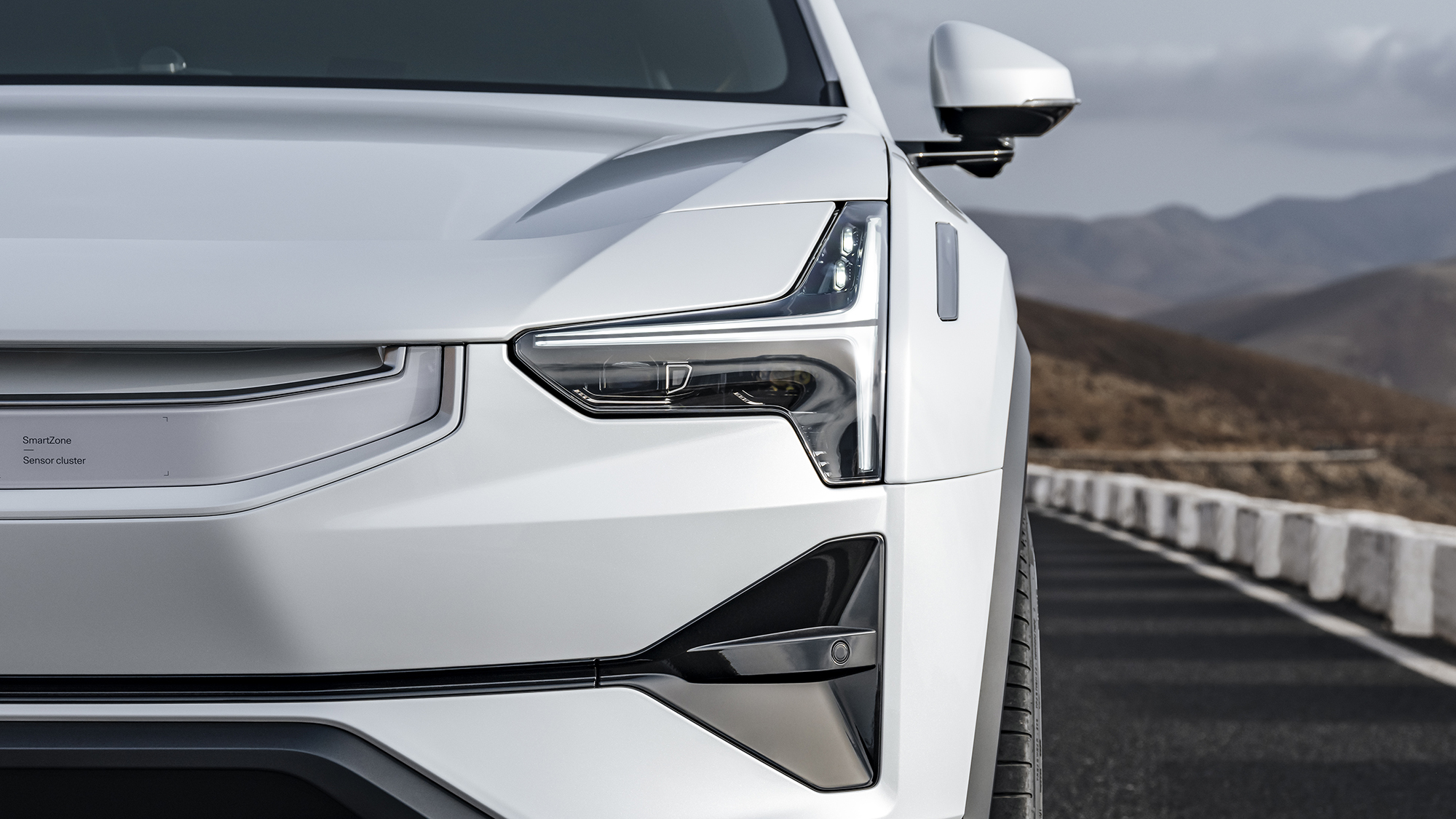
Safety
The Polestar 3 is yet to be rated in ANCAP or Euro NCAP safety testing.
The Tesla Model Y has achieved a five-star ANCAP safety rating under the 2022 criteria, which has now been superseded by more stringent tests. It was also rated highly by the IIHS in the US.
Both the Polestar and Tesla come with a suite of active safety assistance systems as standard, including front auto emergency braking (AEB), adaptive cruise control, lane centring assist, and blind-spot detection (with blind-spot cameras in the Tesla).
However, the Tesla EV uses a camera-only system and therefore lacks rear cross-traffic alert. New examples also don’t come with front and rear parking sensors; a future software update is promised to re-enable this feature by relying on its eight all-round exterior cameras.
Regardless, the Tesla Model Y earned a strong 98 per cent score in ANCAP’s safety assist category.
The Polestar 3 (with its included Plus Pack) benefits from a combination of camera and radar sensors powered by the Nvidia Drive core processor, rear AEB, and a 360-degree camera as standard.
Optional is a more advanced $6000 package, which integrates long-range LiDAR sensors, three additional cameras, auto-cleaning camera washers, and an additional Nvidia Drive Orion computing core to prepare for an autonomous driving future.
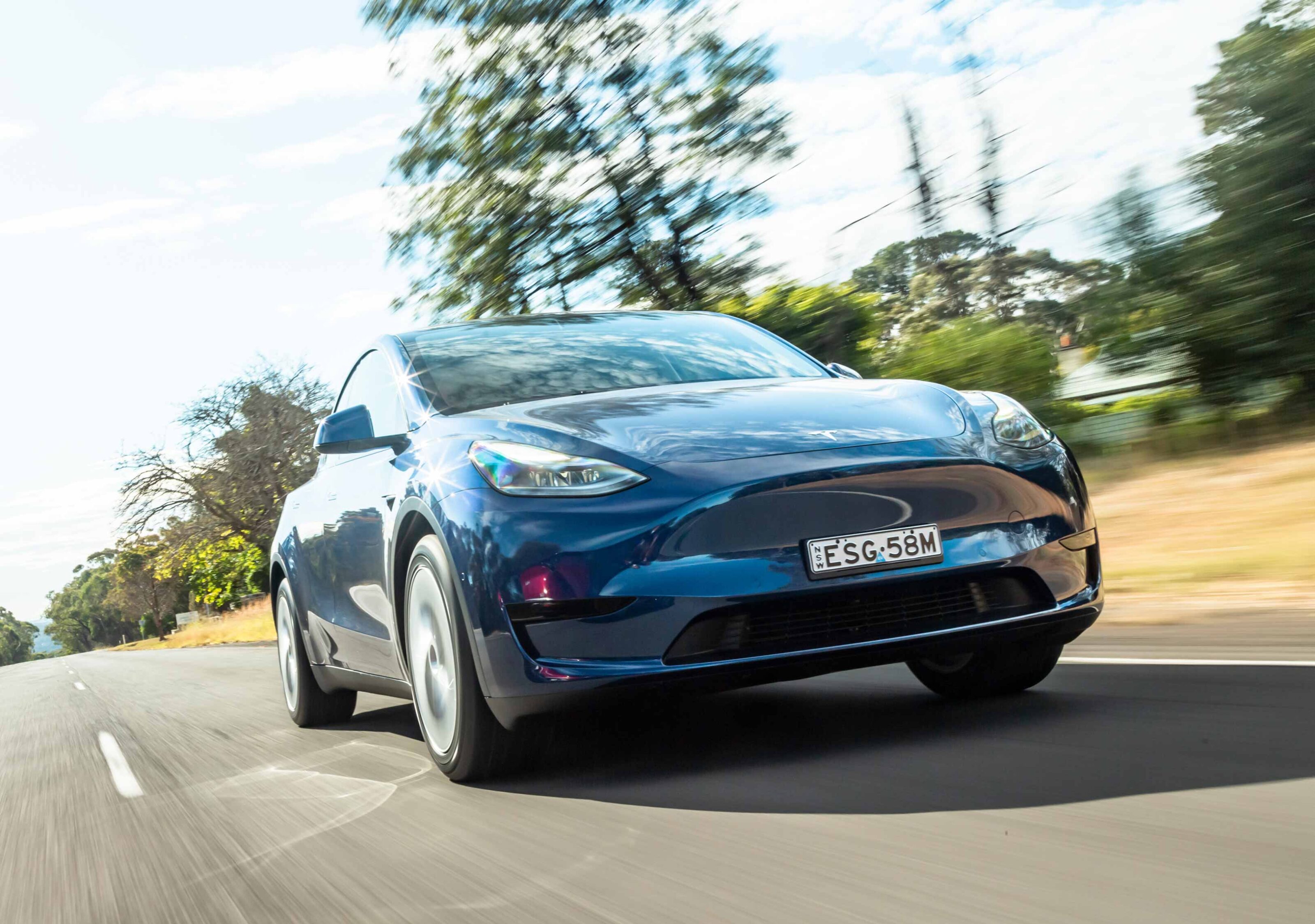
Warranty and servicing
Polestar 3
The Polestar 3 is backed by a five-year vehicle warranty and an eight-year/160,000km battery warranty.
It promises to retain at least 70 per cent health in an eight-year period, otherwise a replacement of degraded modules, or the entire pack, may be offered.
Servicing is required every 24 months/30,000km with the first five-years/100,000km maintenance visits included for free
Tesla Model Y
The Tesla Model Y has a four-year/80,000km warranty, while the battery coverage varies ever so slightly. The base RWD comes with an eight-year/160,000km battery warranty, whereas the Performance gets an eight-year/192,000km coverage – both promising it’ll retain at least 70 per cent battery health in that period.
For servicing, Tesla a condition-based servicing scheme, with the vehicle notifying owners when specific checkups may be needed. Tesla also recommends a range of routine maintenance tasks.
Conclusion: Value, desire, and waiting times…
Perhaps unsurprisingly, the near-ubiquitous Tesla Model Y paints a better better value picture in this comparison – at least on paper. It’s quicker, more efficient, and even more practical despite its smaller exterior dimensions.
The Polestar 3 offers a slightly greater driving range with its significantly larger battery, along with an instrument display directly in front of the driver, and a higher ground clearance.
Still, the Model Y’s specs, along with its more immediate availability and delivery times – inside a few months, rather than waiting a year for the Polestar 3’s launch – gives it the edge here.
If you can wait, the Polestar 3 offers its own upsides – especially for a model not truly expected to be cross-shopped with the Model Y. Click here to see how the ‘P3’ compares with its intended rivals.
Wheels Media thanks EV Database for the data noted above.
We recommend
-
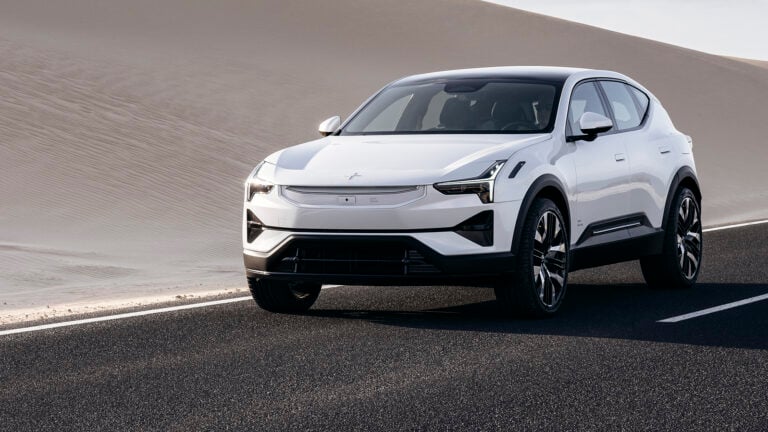 News
News2024 Polestar 3 pricing and features announced, Australian debut delayed
The upcoming Polestar 3 electric large SUV, initially planned for an early-2024 Australian launch, has suffered a production delay for all markets
-
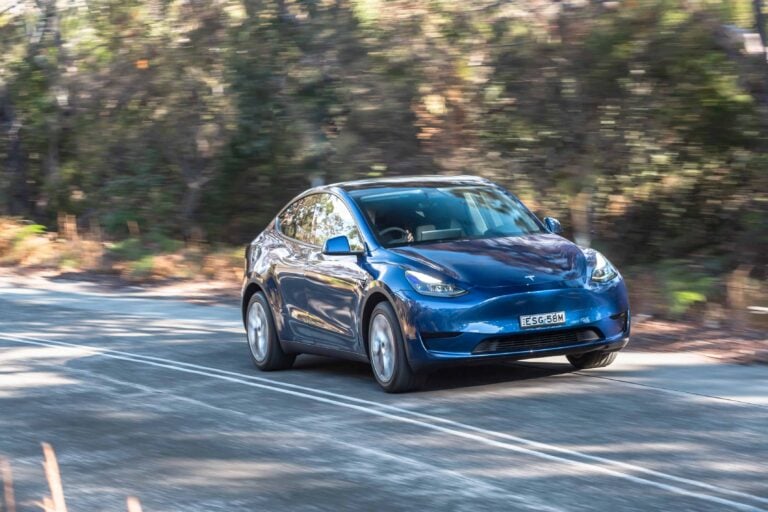 Reviews
Reviews2022 Tesla Model Y review
Tesla’s Model Y electric SUV is here at last. We find out if it was worth the wait.
-
 News
NewsNew car calendar 2026: All the new cars coming to Australia next year
Here’s the WhichCar by Wheels guide to all the new cars that will launch in Australia in 2026. Check back in regularly for updates...




